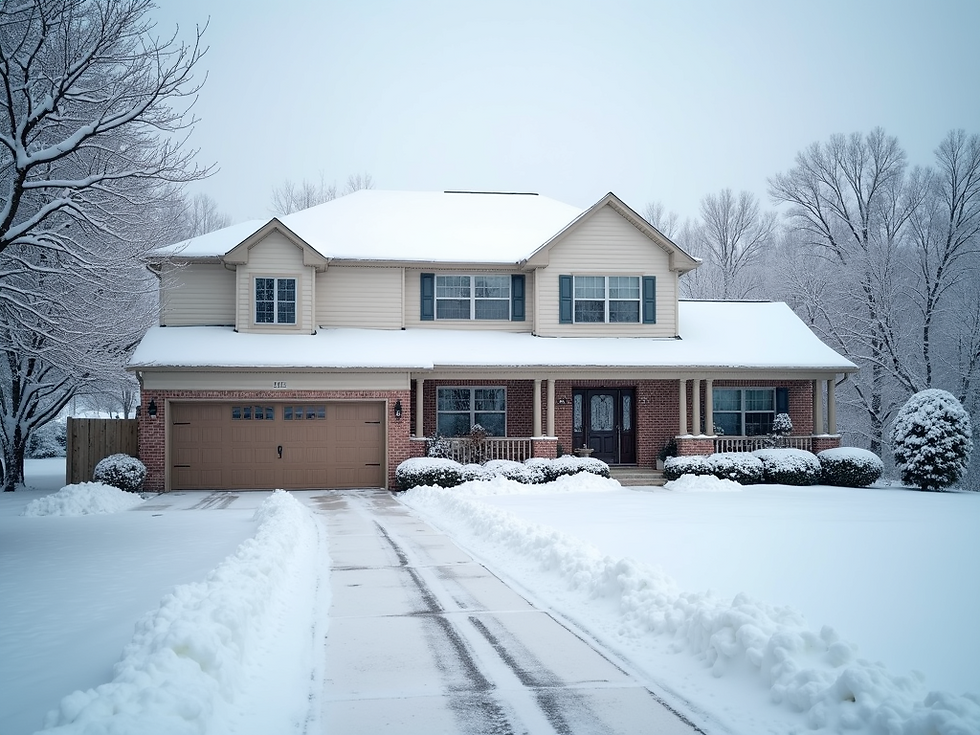Innovative Applications of Reclaimed Concrete in Contemporary Design
- Jon

- Dec 29, 2024
- 3 min read
Concrete has long been a foundational material in construction, synonymous with strength and durability. However, in recent years, reclaimed concrete has emerged as a unique design element that marries sustainability with aesthetics. This post delves into the creative uses for reclaimed concrete in modern design, showcasing its versatility and appeal.
The Charm of Reclaimed Concrete
Reclaimed concrete is derived from the deconstruction of old buildings, bridges, and other structures. Its rustic texture and unique history provide an aesthetic that new concrete simply cannot replicate. The reuse of this material not only reduces waste but also brings character and depth to various design projects.
The tactile quality and variations in color, texture, and pattern play into the growing preference for using natural and recycled materials in contemporary design, emphasizing both environmental responsibility and artistic expression.
Architectural Elements
One of the most common applications of reclaimed concrete is in architectural features. Designers often use it to create striking walls, facades, or even entire buildings. The distinct markings and textures of reclaimed concrete can evoke a sense of history, creating a dialogue between old and new.
Architectural applications may include accent walls that serve as focal points, where the raw aesthetics of the concrete add depth to modern interiors. Additionally, reclaimed concrete can frame expansive windows or act as a base for contemporary structures, blending modern design with the historical narrative of the reclaimed material.
Landscaping Innovations
The use of reclaimed concrete extends beyond the interior of buildings; it can significantly enhance outdoor spaces as well. Garden paths, retaining walls, and planters made from reclaimed concrete not only offer a sustainable choice but also a visually appealing one.
For example, incorporating reclaimed concrete into landscaping can create a rustic charm that complements the natural environment. Unique shapes and textures can be fashioned into benches or outdoor showcases, providing stylish yet sturdy elements that withstand the elements.
Furniture Design
The world of furniture design is not exempt from the allure of reclaimed concrete. Its solid nature allows designers to create robust pieces that can effortlessly serve as statement items in a home or workspace.
Consider coffee tables with a reclaimed concrete top, which provide both a functional surface and an artistic statement. By combining concrete with other materials such as wood or metal, designers create visually intriguing contrasts that play well together, resulting in multifunctional and aesthetically versatile furniture.
Decorative Accents
In addition to larger architectural applications, reclaimed concrete can be utilized as decorative accents throughout a space. Smaller items such as candle holders, vases, and art pieces made from reclaimed concrete can add flair and sophistication to any decor.
These decorative pieces can highlight the raw and rugged quality of concrete while showcasing the creativity involved in their design. The unique finishes and textures of reclaimed concrete provide an opportunity for artisans to experiment, further enriching the aesthetic experience for viewers.
Sustainable Practices and Environmental Impact
The environmental benefits of using reclaimed concrete cannot be overstated. By repurposing existing materials, designers and builders contribute to reducing waste in landfills and lower the demand for new materials. This shift not only conserves resources but also minimizes the carbon footprint associated with concrete production.
Furthermore, the trend towards sustainability in modern design reflects a broader cultural shift towards environmentally responsible practices. Communities are increasingly seeking out materials that not only serve a practical function but also embody a commitment to sustainability.
Challenges and Considerations
Despite its many advantages, working with reclaimed concrete does come with challenges. The variability of reclaimed materials can sometimes lead to inconsistencies in color and texture, requiring skilled craftsmanship to ensure a cohesive design.
Additionally, the sourcing of reclaimed concrete may pose logistical hurdles. Designers must be meticulous in selecting materials that are both aesthetically pleasing and structurally sound. However, overcoming these challenges can result in uniquely beautiful projects that stand out.
The Future of Reclaimed Concrete in Design
As the design world continues to evolve, so too does the potential for reclaimed concrete. Designers are increasingly looking towards such sustainable materials to define their work, signaling a shift toward a more mindful approach to creation and consumption.
Innovative uses for reclaimed concrete are likely to expand further as technology and design strategies develop. It opens up a realm of possibilities for future projects—whether in residential, commercial, or artistic applications.
Conclusion
Reclaimed concrete possesses a captivating charm that intertwines history with modern design sensibilities. Its versatility allows it to flourish across various uses, from architecture to landscaping, furniture to décor.
By embracing reclaimed concrete, designers are not only making a statement about sustainability but also contributing to a more thoughtful way to integrate materials into our environments. The hidden beauty of reclaimed concrete resonates and gives character, making it an essential component of contemporary design that is both awe-inspiring and responsible.




